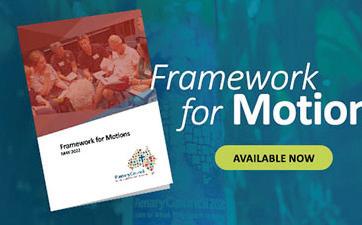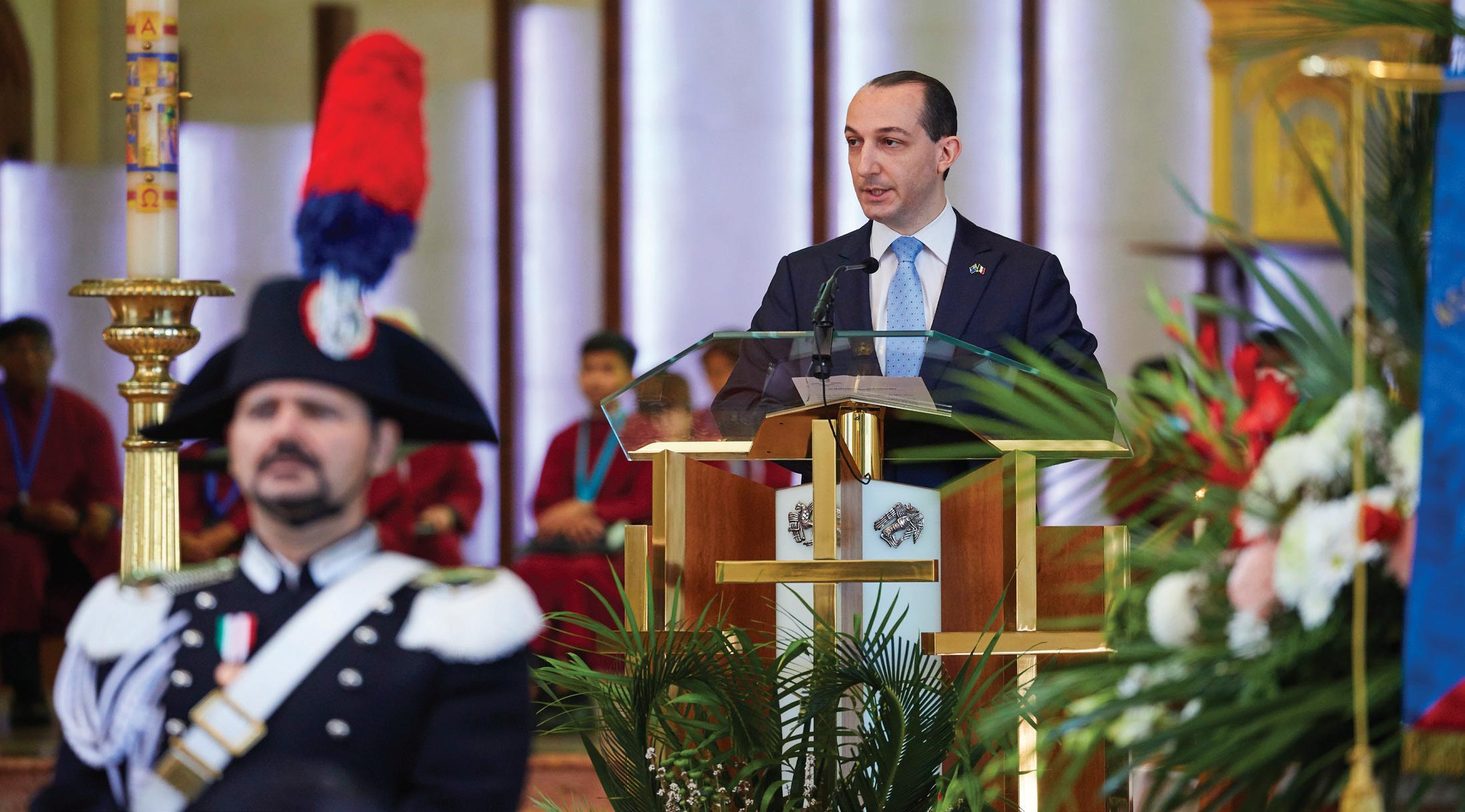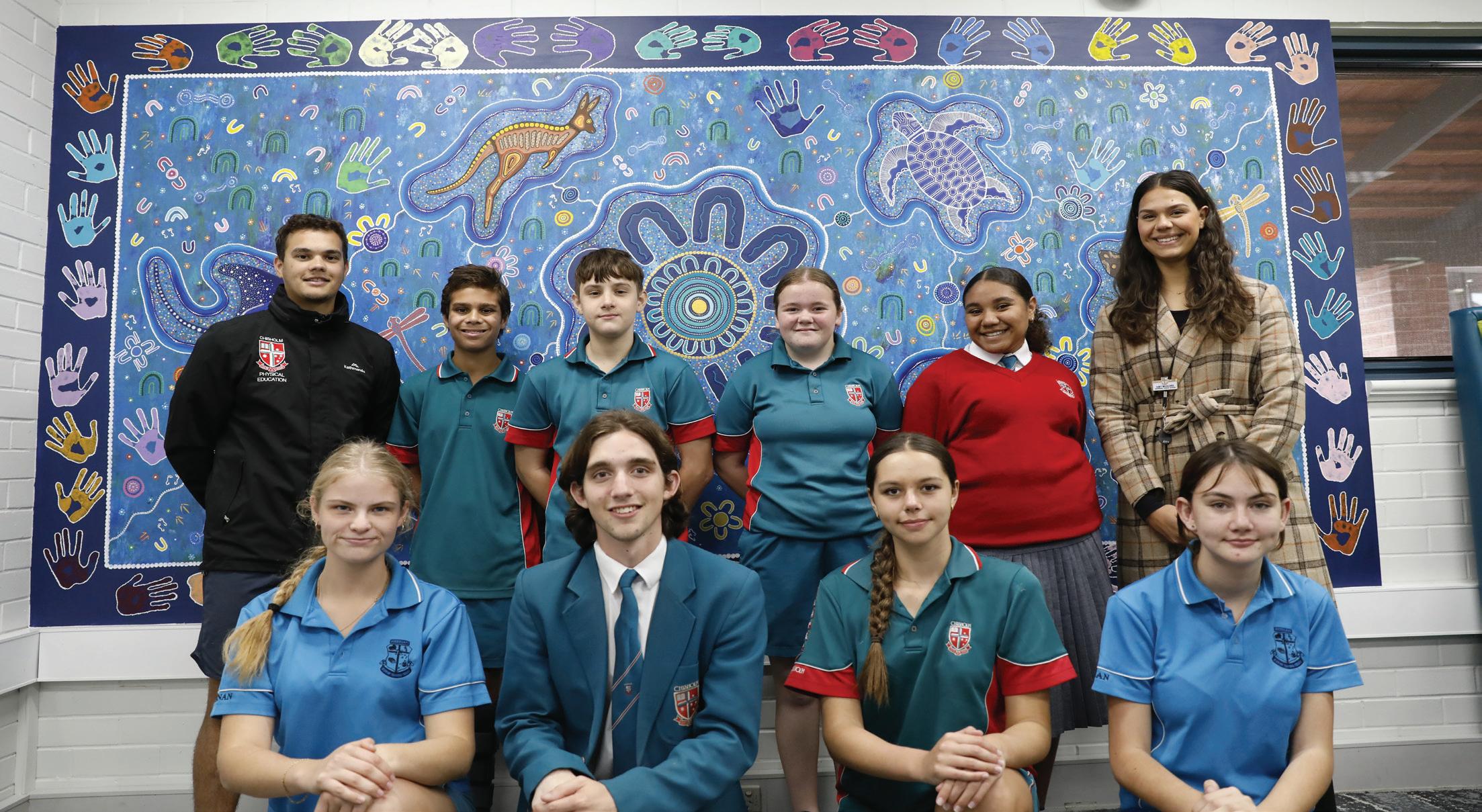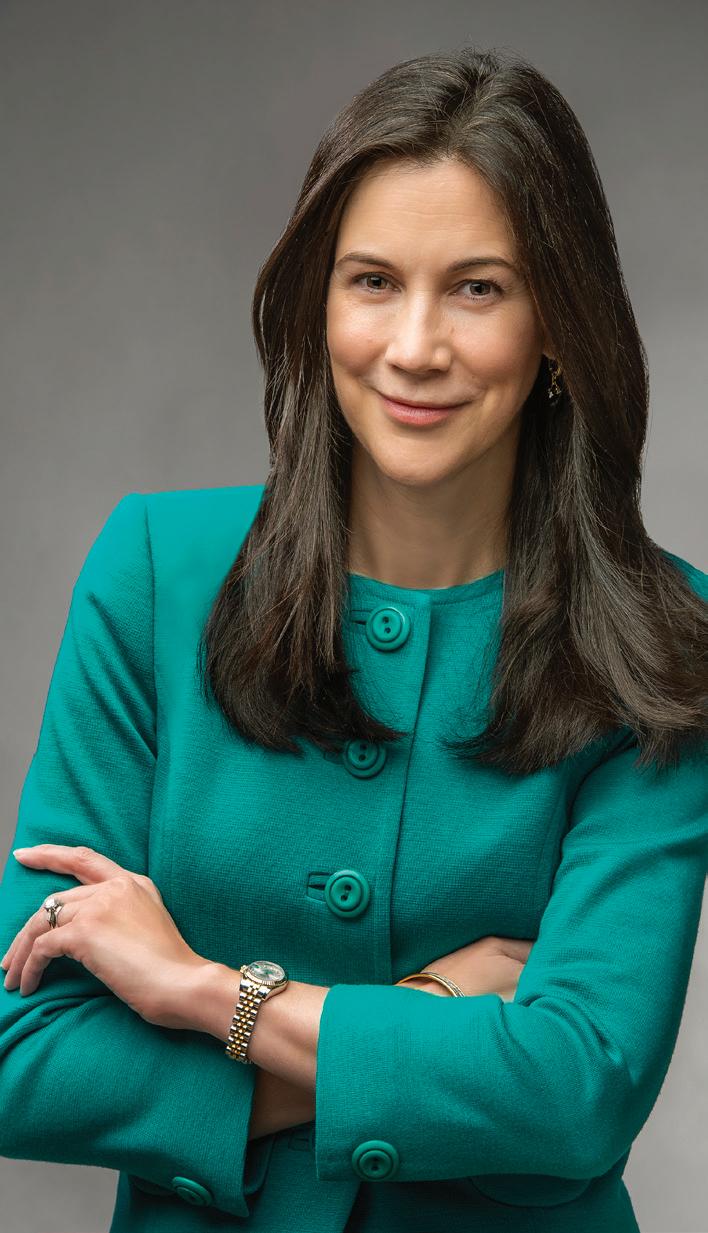

MOTIONS FRAMEWORK PUBLISHED FOR SECOND COUNCIL ASSEMBLY

The 30 motions that will be considered during the second assembly of the Fifth Plenary Council of Australia in July, arising from four years of national conversation, have been published.
The Framework for Motions “will form the backbone of our reflection, discussion and decision when we gather”, Plenary Council president Archbishop Timothy Costelloe SDB wrote in a message to fellow Members. “Our time together in Sydney … will be enormously significant for the whole Catholic community, and for our wider society,” Archbishop Costelloe wrote.
“As we strive to discern, and then to embrace, all that God is asking of us now and as we move into the future, we will be challenged to recognise both the strengths and weaknesses of ‘who we are’ and the hope which lies in ‘who God is calling us to become’.”
Bishop Shane Mackinlay, the vice
president of the Plenary Council, said the road to the Framework for Motions goes back to 2018, starting with the Listening and Dialogue phase of the Council which drew more than 17,000 submissions on behalf of 222,000 people.
“Carried forward through prayer, reflection and discernment, and drawing on Scripture, Church tradition, papal teaching and our current context, these 30 motions have emerged,” he said.
“In recent months, the Council’s drafting committee worked collaboratively to prepare this Framework for Motions, drawing on more than 30 contributors, including Council Members, advisers and theologians. A key part of this process has also been the input received from nearly 130 Council Members who provided feedback on the initial working document that
was distributed to them for reflection.
“It has been a great example of how bishops, priests, religious and lay people can work together to create an opportunity for important conversations within the Church.”
The motions are contained within eight sections of the document: (1) Reconciliation: Healing Wounds, Receiving Gifts; (2) Choosing Repentance - Seeking Healing; (3) Called by Christ - Sent Forth as Missionary Disciples; (4) Witnessing to the Equal Dignity of Women and Men; (5) Communion in Grace: Sacrament to the World; (6) Formation and Leadership for Mission and Ministry; (7) At the Service of Communion, Participation and Mission: Governance; (8) Integral Ecology and Conversion for the Sake of Our Common Home. Bishop Mackinlay said that the commitment to “co-responsibility” that guided the document’s preparation will also be evident during the second assembly when 277 Members from across the country will pray with, reflect upon and vote on the motions.
“As we prepare to conclude this plenary council, our first in 85 years and the first with the voice of women and lay people present, we invite the people of God in Australia to pray for all Members in these final weeks of preparation,” he said.
The second, and final, assembly of the Plenary Council will be held in Sydney from 3-9 July. The Mass to formally close the Council will be celebrated at St Mary’s Cathedral at 10.30am on Saturday, 9 July. That Mass will be open to the public.
Access the Framework for Motions document at: https://plenarycouncil. catholic.org.au.
MASS MAPS VIBRANT FUTURE FOR PERTH’S ITALIAN COMMUNITY

Italian Australians gathered at St Mary’s Cathedral on 29 May to pray for God’s blessings on their continued development as a vibrant community in Perth.
Associations and clubs from throughout the city joined Cathedral Dean, Fr Sean Fernandez, in a celebration enhanced by colourful regalia and the presence of two Carabinieri – Italian officers of law – in full ceremonial dress, and the presence of the consul of Italy in Western Australia, representing the Italian government.
The annual celebration was timed to coincide with Italy’s national day, the Festa della Repubblica, on 2 June.
The day marks 76 years since Italy voted to become a republic and 66 years since the Italo-Australian Welfare & Cultural Centre (IAWCC), which organised the Mass, was established in Perth.
Speaking with The Record this week, Centre President Enzo Sirna said the organisation was happy to coordinate the celebration.
“The Mass has always been a very strong and valued tradition in our
community,” Mr Sirna said.
“And we feel there is a connection there (with the Cathedral). The Italian community put in a lot of effort and fundraising for the Cathedral development project, including funding from IAWCC for the baptismal font, so having Mass there is very special for us.”
The IAWCC established the first aged home for Italians in Australia in the early 1970s and continues to provide residential and in-home care support for Italian Australians.
The contemporary organisation teaches Italian language and culture to more than 10,000 students in Perth, most of them in Catholic primary schools, as well as nurturing ItalianAustralian business connections and maintaining strong links with the Italian Consulate.
“There is significant interest in partnering in a lot of different areas as far as Italy is concerned,” Mr Sirna said.
“Qantas has opened up a direct flight from Perth to Rome, for example, and the (WA) Premier will fly to Rome at the end of June (his first
overseas trip in three years), so from cultural, language and commercial perspectives, there is recognition of significant partnerships that have been created.”
Cathedral Dean Fr Sean Fernandez gave the homily for the Mass, which took place on the Feast of the Ascension of the Lord – a celebration, Fr Sean told congregants, that celebrated a present lived in “memory of the future”.
“In the Church’s memory of the Lord ascended to sit at the right hand of the Father, we glimpse the future of all that is.
“Of course, we have more than a memory – the Lord is sacramentally present with us, baptising us, feeding us, forgiving us in the sacraments –making the future Kingdom present in our lives here and now …
“The Ascension makes these sacramental moments possible and opens the future up for us, ‘shedding light on the path to be taken’ (Pope Francis, Lumen Fidei),” Fr Fernandez said.
The Conul of Italy in Western Australia, Mr Nicolò Costantini speaks to the community. In front of him is a Carabinieri - Italian officers of law – in full ceremonial dress. PHOTO: RON TAN.
NYOONGAR ART AT CHISHOLM CATHOLIC COLLEGE

Chisholm Catholic College school values are Character, Learning and Compassion and, with these in mind, the school is promoting an environment for learning diversity, inclusiveness and reconciliation. Inclusivity and sense of belonging are being forged for Aboriginal students and staff of the school through art. Two new artistic features, three totem poles and a painted mural, were newly presented on campus this term, done by current staff and local artists. The three totem poles can be viewed outside the Graham Cooney Centre for Learning Diversity in the heart of the school. After development of the Reflective Space at the front of the school, in early 2021, this artistic project came to fruition.
Artwork on the totem poles was a collaboration between the college’s Aboriginal Liaison Officer, Emily Smith, and current Year 10 student, Shantaya Ryder.
Shantaya was inspired by her father, an Aboriginal artist whose work influenced her growing up and inspired two of the three totem pole artistic designs.
Each totem pole represents one of the college values, with the Nyoongar translation on each – Walkoo (Character), Kadidjiny (Learning) and
Koort (Compassion). Colours on the totem poles are also symbolic, representing the colours of the Aboriginal and Torres Strait Islander flag and that of the land and water. Not only are the totem poles new on campus, but a mural was also completed this term. During the final term of last year, Linda Lee Loo, local artist of Linlelu Arts, was welcomed on campus by Aboriginal staff and students of the college, together with her husband, Bruce Loo, to design an art mural. The incursion for the couple was a day of collaboration, as everyone worked together to develop a draft representing what they wanted their story to be. Painted in the Aboriginal Education Office, students wanted the artwork to represent the college, Aboriginal Education Office and the significant location where the College is geographically positioned behind the Hillcrest Reserve.
Miss Amy McGuire, the college’s Aboriginal Liaison Officer, wrote, “They wanted the animals in the artwork to be meaningful and relevant. The use of love and friendship symbols represent the relationships formed through the Aboriginal Program and the school. Small gathering and yarning circles represent everyone coming together to learn and grow. Travel
lines represent everyone travelling to and from the school, and the river and waterhole symbols represent the Derbarl Yerrigan (Swan River). The use of animal footprints is included to represent animals in the art but also how they are a food source. Elders are also represented as they are always looking over us and guiding us through life spiritually. Around the border of the mural are handprints of all Aboriginal Education students and Aboriginal and support staff, which represent the Indigenous and non-Indigenous community within the school and how they are all connected.”
These artistic endeavours of the college embrace an ethos that the Catholic Church maintains in its pursuit of being truly universal, with an acknowledgement of cultures and diverse peoples as stated in # 1879 of the Catechism of the Catholic Church: “The human person needs to live in society. Society is not for him an extraneous addition but a requirement of his nature. Through the exchange with others, mutual service and dialogue with his brethren, man develops his potential; he thus responds to his vocation”.
Students and staff stand in front of the mural, result of their collaboration with local Aboriginal artist Linda Lee Loo who painted it. PHOTO: SUPPLIED.
INTERVIEW WITH SOUTHERN CROSS
WA CEO CLARE GRIEVESON

Clare Grieveson is the new CEO at Southern Cross Care (WA), a major provider of health, care and accommodation needs for the ageing and those living with disability and mental illness in Western Australia. She sat down with Health Matters for her first interview. Tell us about yourself I grew up in England, in Northumberland and Kent, studied at University College London as a speech pathologist, and spent the first 10 years of my career in the NHS. I met my Australian husband in the UK and we moved to Melbourne, Victoria where I led the speech pathology service at Monash Health. My previous role was at Mercy Health Australia where, for eight years, I was Executive Director Quality,

Safety and Innovation, responsible for clinical governance and staff safety across their hospitals, aged-care and home-care services.
How did you transition from speech pathology to aged-care management? I have worked for a number of supportive and inspiring chief executives who have challenged and encouraged me to explore leadership opportunities, including working in service improvement and planning. At Mercy Health, my group executive role spanned aged care, home care and hospital services and it is in this role that I developed my knowledge of aged-care management.
Why did you move to Southern Cross Care?
It is important to me that I work within a “for purpose” and values-based organisation.
Southern Cross Care is an organisation that shares values grounded in Catholic social teaching, and this resonated with me. Southern Cross Care WA’s vision of supporting our elders to live enriched and happy lives is wonderful and I am very proud to contribute to it. When the opportunity came up to lead a values-based Catholic organisation in the aged-care sector, in the state with the best weather in Australia, the decision was easy to make.
What are the most immediate challenges you face at Southern Cross Care?
The spread of COVID-19 in Western Australia is challenging for everyone, particularly aged and community care providers. Southern Cross Care WA has been preparing as best we can, and we have introduced rapid antigen testing for all staff and visitors at our care facilities and residential sites, in addition to COVID-19 safety protocols. There are many things we
can take away from this experience, including preventative measures for disease control, and it has highlighted the needs of vulnerable people in our community, particularly older Australians.
Aged care staff are under immense pressure. What can be done to help them?
We have a great team at Southern Cross Care WA, made of up of incredibly talented and compassionate people who were drawn to aged, disability, mental health and home care because they genuinely want to help people. The spread of COVID19 in Western Australia is immensely challenging for everyone, particularly our wonderful staff, and we are looking out for one another and encouraging everyone to prioritise their wellbeing. Southern Cross Care WA has also been working closely with our colleagues in the aged and community care sector in Western Australia to advocate with government, share resources and learnings to support our people and best manage the community spread of COVID-19.
Is the number of people wanting to enter aged care under pressure due to COVID?
In Western Australia, the circumstances differ from the rest of Australia. COVID-19 was kept out of the state for a long period of time which enabled the community to take up triple vaccination, RAT testing and learnings from other states before COVID-19 became widespread in the community. This has meant that demand for retirement living, aged and community care has been reasonably stable in most locations.


Clare Grieveson is the new CEO at Southern Cross Care (WA). PHOTO: SUPPLIED.
